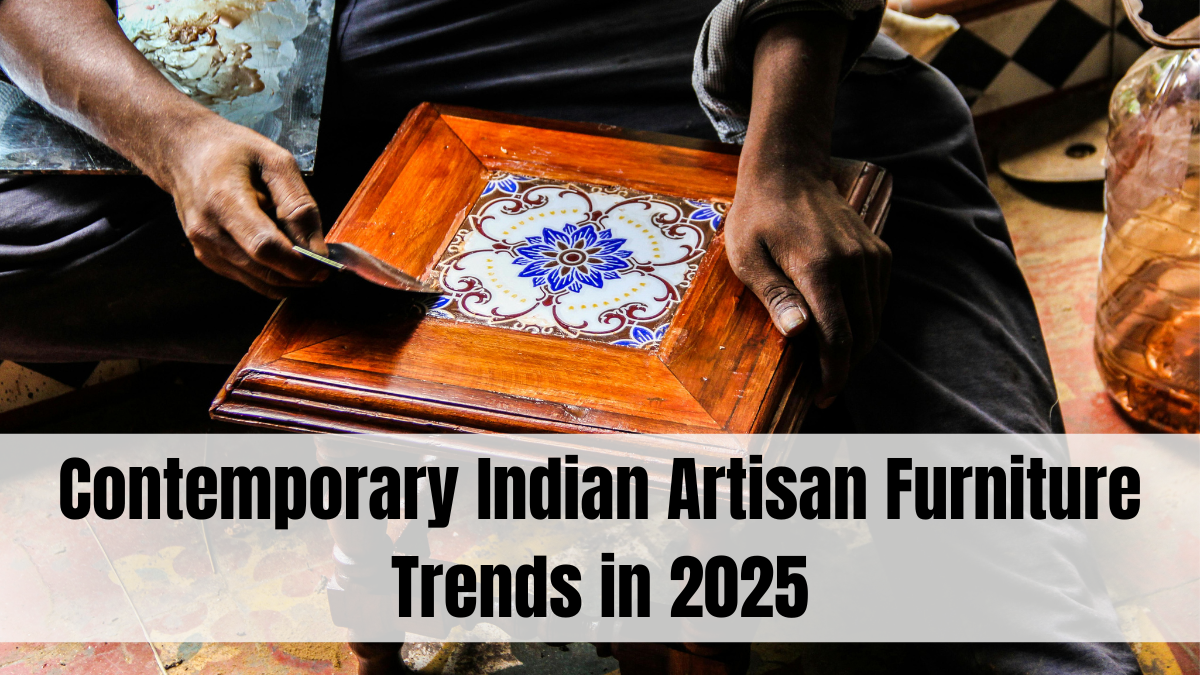Indian artisan furniture is witnessing a renaissance in 2025, as contemporary design aesthetics merge seamlessly with centuries-old craftsmanship traditions. Contemporary Indian artisan furniture 2025 represents a vibrant blend of culture, sustainability, and innovation that appeals to modern homeowners seeking unique, handcrafted pieces with timeless appeal.
This article explores the evolving trends, popular styles, materials, and the artisans shaping the future of Indian furniture, alongside how consumers can choose and care for these exquisite creations.

The Revival of Handcrafted Elegance in Modern Homes
For decades, mass-produced furniture dominated urban Indian homes, often lacking personality and heritage. However, there is a growing shift towards artisanal, handcrafted furniture that embodies:
-
Authentic craftsmanship using traditional techniques like carving, inlay, and hand-painting.
-
Use of sustainable and locally sourced materials such as rosewood, mango wood, cane, and bamboo.
-
Fusion of minimalist, Scandinavian, and contemporary design elements with classic Indian motifs.
-
Customization options, allowing customers to own exclusive pieces that tell a story.
This revival caters to discerning buyers valuing authenticity, durability, and cultural connection.
Key Trends in Contemporary Indian Artisan Furniture 2025
-
Sustainable Materials: Preference for eco-friendly woods and natural finishes reflecting environmental awareness.
-
Multi-Functional Designs: Furniture combining aesthetic appeal with utility, such as storage-integrated sofas and foldable tables, ideal for compact urban spaces.
-
Mix of Old and New: Combining rustic hand-carved elements with sleek metal or glass accents for a modern twist.
-
Vibrant Textiles and Upholstery: Incorporating traditional Indian fabrics like ikat, block prints, and embroidery in cushions and chairs.
-
Local Artisan Collaborations: Brands partnering directly with rural craftspeople to preserve skills and promote fair trade.
These trends reflect a holistic approach, marrying style with ethics.
Popular Artisan Furniture Styles in India
-
Rajasthani Carved Furniture: Elaborate floral and geometric carvings with bold colors, rooted in desert heritage.
-
Kerala Rosewood Craft: Known for elegant simplicity and smooth finishes, often featuring brass detailing.
-
Bengal’s Shital Pati & Cane: Lightweight woven furniture perfect for airy, tropical homes.
-
Goan Portuguese Influences: Brightly colored painted wooden furniture with curved silhouettes.
-
Contemporary Minimalism: Clean lines and muted tones integrating traditional craftsmanship subtly.
Each style brings a unique narrative, appealing to varied tastes.
How to Choose and Care for Artisan Furniture
-
Assess Your Space: Consider scale and functionality; artisan pieces often make bold statements requiring balanced room layouts.
-
Understand Material Care: Different woods and finishes need specific cleaning and conditioning; use natural oils and avoid harsh chemicals.
-
Support Ethical Brands: Choose brands promoting sustainable sourcing and fair wages to artisans.
-
Customization: Leverage bespoke options to tailor designs to your preferences and needs.
-
Longevity: Invest in sturdy construction and timeless designs for heirloom-quality pieces.
Proper care ensures that these works of art remain stunning for decades.
The Impact of Artisan Furniture on Indian Communities
The resurgence of artisan furniture is not just a design movement; it empowers thousands of skilled craftspeople across India by:
-
Providing sustainable livelihoods in rural and semi-urban regions.
-
Preserving endangered craftsmanship techniques through training and innovation.
-
Encouraging eco-friendly production methods aligned with global sustainability goals.
-
Creating export opportunities, showcasing India’s rich heritage on world stages.
Buying artisan furniture is a way to contribute meaningfully to cultural preservation and economic development.
The Future Outlook for Indian Artisan Furniture in 2025
-
Increasing collaborations between designers and artisans to push creative boundaries.
-
Adoption of digital platforms for global marketing and direct artisan-consumer engagement.
-
Integration of smart furniture elements such as wireless charging and modularity.
-
Government and NGO initiatives providing infrastructure, training, and certification for artisans.
As tradition embraces technology and global trends, Indian artisan furniture is poised to become a defining feature of modern homes worldwide.
FAQs
What defines contemporary Indian artisan furniture?
It blends traditional handcraft techniques with modern design elements, materials, and functionality.
Are artisan furniture pieces expensive compared to mass-produced furniture?
Typically yes, due to handcrafted quality, unique designs, and sustainable sourcing, but they offer better durability and cultural value.
How can I verify if furniture is truly handcrafted by Indian artisans?
Look for certifications, brand transparency, and direct collaboration with artisan communities.
What maintenance is required for wooden artisan furniture?
Regular dusting, periodic application of natural oils or polish, and avoiding exposure to extreme humidity or direct sunlight.
Can artisan furniture be customized to fit specific needs?
Many brands offer bespoke options allowing size, design, and finish customizations.
Click here to know more.




